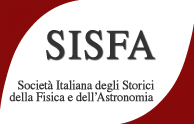Speaker
Description
After the exhibitions and conferences organized by the University of Modena between 2014 and 2015, significant events with which we wanted to celebrate the 150th anniversary of the death of Giovan Battista Amici (1786-1863), this year, in which the 235th anniversary of his birth in Modena falls, it seems appropriate remember his career in Modena, where he was born in 1786 and where he remained until 1831 when he moved to Florence at the invitation of Leopold II of Habsburg Lorraine Grand Duke of Tuscany to fill the post of director of the Observatory of the Museum of Physics and Natural History,. After obtaining in 1808 the title of Engineer Architect at the University of Bologna, between 1811 and 1825 Amici taught Algebra, Geometry and Plane Trigonometry at the University of Modena.
Meanwhile since 1809, thanks to the urging of the professor of Physics at the University of Modena Giovanni Battista Tomaselli, began his career as scientific instruments’s maker by installing his laboratory in his house in Via dei Servi, where before Royal Printing House Eredi Soliani has been located.
Already in 1811 he made his Newtonian reflecting telescope, the largest ever built in Italy, for the National Exhibition organized in Milan by the Royal Institute of Sciences. The following year he made his catadioptric, or reflecting, microscope, and between 1812 and 1813 several reflecting telescopes came out of Amici's laboratory in Modena: for the forthcoming Capodimonte Observatory in Naples, for the Specola in Bologna and for the Astronomical Observatory of Padua.
After the first long journey in 2017, which took him from Modena to Naples through Bologna, Florence and Rome, he made important acquaintances among officials, astronomers, naturalists, geodesists and cartographers. This enabled him to gain an appreciation for his instruments and secure numerous orders for the construction of microscopes, telescopes, micrometers, repeating circles and ‘camere lucide’, of which he made 270 examples that were particularly successful. The 1824 is considered the year of birth of the modern compound achromatic microscope.
For the Astronomical Observatory of Modena, inaugurated in 1827 in the east tower of the Ducal Palace, under Giuseppe Bianchi’s direction, he made several instruments including a passage instrument still preserved in situ.
Before moving to Florence, in the spring of 1827 Amici had undertaken his first trip to Paris and London to meet with a lot of scolars and colleagues: his son Vincenzo kept an accurate diary of this trip.

